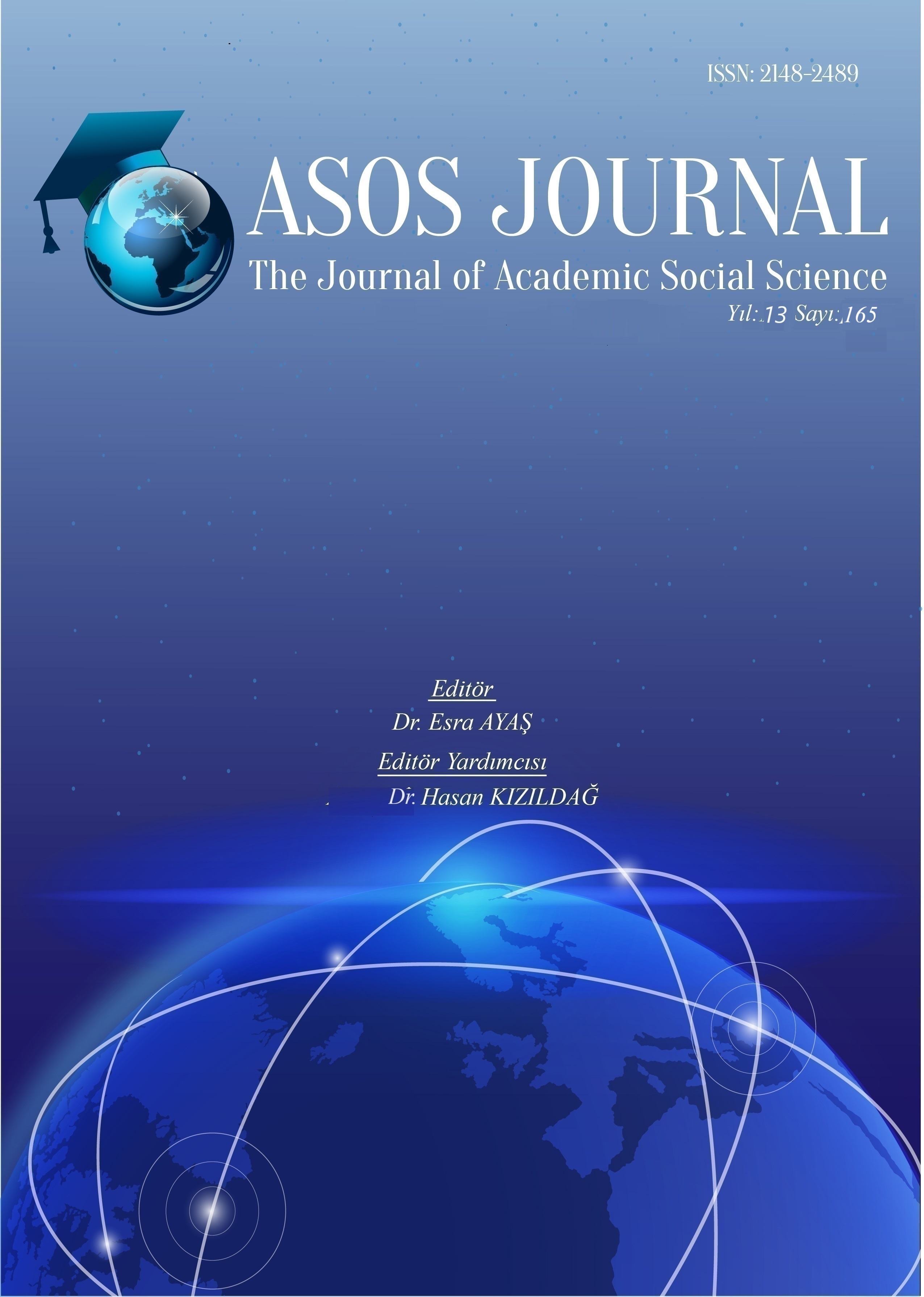Author :
Abstract
Dünyada artan afet sayısı ve şiddeti, bireylerin ve toplumların afet olaylarına yönelik algılarını ve hazır bulunuşluk düzeylerini önemli bir araştırma konusu haline getirmiştir. Özellikle, eğitim kurumlarındaki genç bireylerin bu konudaki bilgileri ve tutumları, toplumun genel dayanıklılığını etkileyebilir. Öğrencilerin afetlere dair algı ve hazır bulunuşluk seviyelerinin anlaşılması, afet hazırlık programlarının geliştirilmesi ve uygulanabilirliğini artırmak için kritik öneme sahiptir. Bu araştırmanın amacı, hemşirelik öğrencilerinin afetlere yönelik algılarını ve afetlere hazırlıklı olma durumlarını belirlemektir. Tanımlayıcı desenle yapılan araştırma, gönüllü 340 öğrenci ile sonlandırılmıştır. Verilerin toplanmasında “Öğrenci Hemşire Veri Toplama Formu”, "Üniversite Öğrencileri Afet Risk Algısı Ölçeği" ve “Afet Hazır bulunuşluk Ölçeği” kullanılmıştır. Verilerin değerlendirilmesinde sayı, yüzde ortalama ve standart sapma gibi tanımlayıcı istatistikler kullanılmıştır. Öğrencilerin afet algı toplam puan ortalamaları 3,20 ±0,62; maruziyet alt boyutu puan ortalaması 3,62 ±0,66; anksiyete alt boyutu puan ortalaması 2,46 ±0,97; etki alt boyutunun puan ortalaması 3,45 ±0,76 ve yönetilemezlik alt boyutu puan ortalaması 3,15 ±0,81 olarak saptanmıştır. Öğrencilerin afet hazır bulunuşluk toplam puan ortalamaları 2,28 ±0,41; AFK (Afet fiziksel koruma) alt boyutu puan ortalaması 2,12 ±0,47; AP (Afet planlama) alt boyut puan ortalaması 2,13±0,59; AY (Afet yardım) alt boyutu puan ortalaması 2,73 ± 0,61 ve AUS (Afet uyarı sinyalleri) alt boyut puan ortalaması 2,21 ±0,59 olarak saptanmıştır. Araştırmanın sonucunda öğrencilerin afet algıları yüksek olmakla birlikte, afetlere hazırlık seviyeleri çok düşüktür. Bu, afetlere yönelik daha sistematik ve kapsamlı eğitimlerin gerektiğini ve hazırlık çalışmalarının acilen yapılması gerektiğini göstermektedir.
Keywords
Abstract
The increasing frequency and severity of disasters worldwide have made the perceptions and preparedness levels of individuals and societies regarding disaster events an important research topic. Particularly, the knowledge and attitudes of young individuals in educational institutions regarding this issue can affect the overall resilience of society. Understanding students' disaster perceptions and preparedness levels is critical for developing and enhancing the applicability of disaster preparedness programs. The aim of this study is to determine the disaster perceptions and preparedness levels of nursing students. This descriptive study was completed with 340 voluntary students. Data were collected using the "Student Nurse Data Collection Form", the "University Students' Disaster Risk Perception Scale", and the "Disaster Preparedness Scale". Descriptive statistics such as frequency, percentage, mean, and standard deviation were used to evaluate the data. The average total score for students' disaster perception was 3.20 ± 0.62; the exposure subscale score average was 3.62 ± 0.66; the anxiety subscale score average was 2.46 ± 0.97; the impact subscale score average was 3.45 ± 0.76; and the unmanageability subscale score average was 3.15 ± 0.81. The average total score for students' disaster preparedness was 2.28 ± 0.41; the disaster physical protection (AFK) subscale score average was 2.12 ± 0.47; the disaster planning (AP) subscale score average was 2.13 ± 0.59; the disaster assistance (AY) subscale score average was 2.73 ± 0.61; and the disaster warning signals (AUS) subscale score average was 2.21 ± 0.59. The results of the study indicate that while students have a high perception of disasters, their preparedness levels are very low. This suggests the urgent need for more systematic and comprehensive disaster preparedness training and the immediate implementation of preparedness activities.





